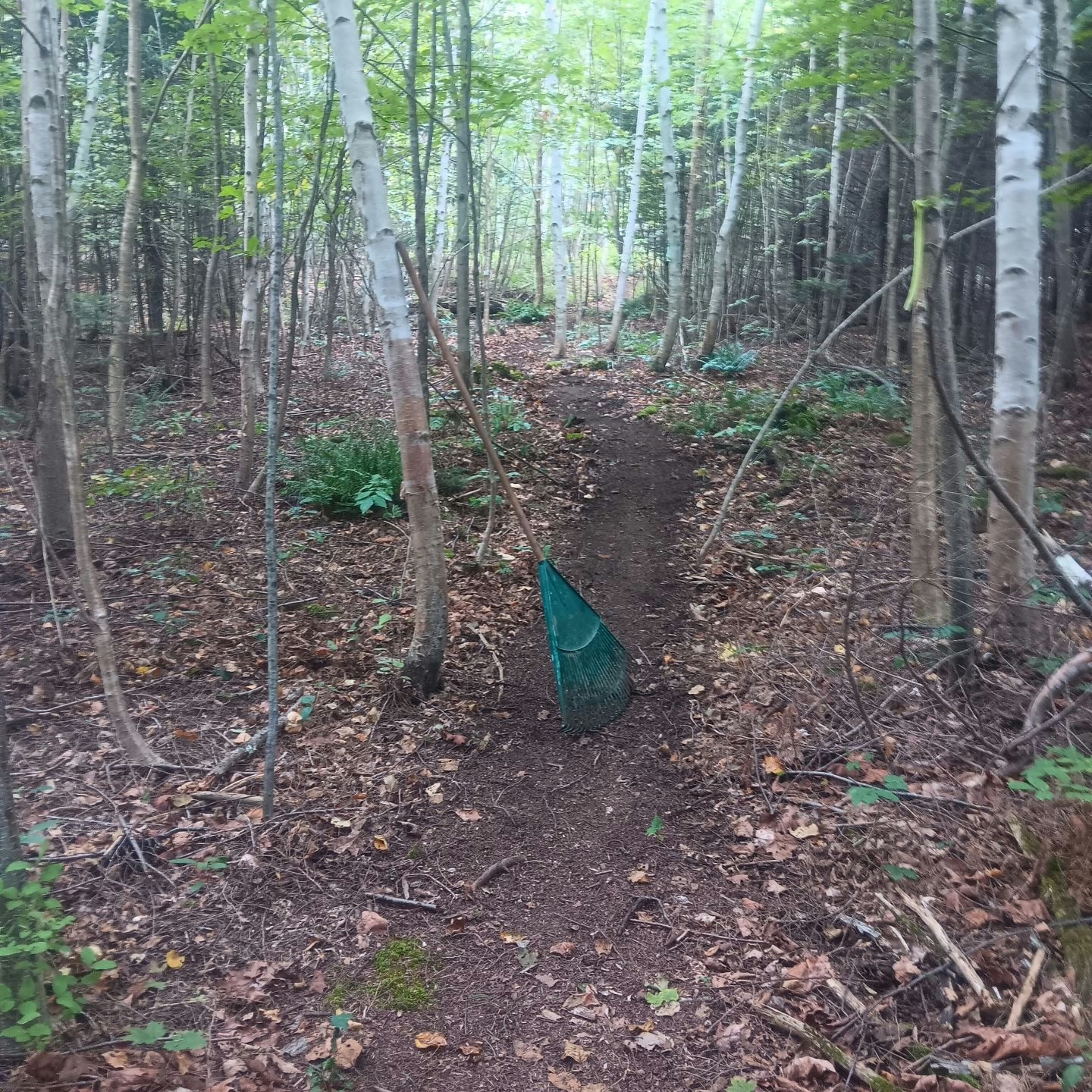One of the long-lasting loves of my life, aside from my wife of course, is trail building. I’m not particularly picky about the trails I create, and since it’s always a work in progress, I’m usually hesitant to invite “serious mountain bikers” to try out my beloved trails. With that said, I have been on a few professionally built trails, or sponsored dot org trails that are considerably worse and have less flow than my home trail system. The trail system winds along open fields, meanders through a small 2-acre apple orchard, and descends into and out of the woods. The basic loop spans approximately 1.7 miles but features several interconnecting loops that can stretch that distance even further or allow riders to choose a shorter route if they prefer. There is a fairly good mix of flat sections and challenging hills; depending on the direction you choose to ride in, it can provide an exhilarating descent for adventurers looking for some excitement or a heart pounding climb. For a longer excursion I can go down onto the State land to Mulligan Stream or pond. That makes a 4 mile out and back minimum.
I started these trails over ten years ago and there is always tweaking to do to make them better, more flowy. Nature herself is a formidable force, plants growing, leaves and twigs not to mention whole trees falling on the trails constantly. You know your a mountain biker when you spend more time in the woods raking than you do raking your lawn.
I started by just walking through the woods, seeking the path of least resistance, marking trees with tape as I go. From that point it’s usually a matter of hand tools and saws. Unfortunately for me I like narrower trails so I can’t get my side-by-side into most locations. If I could that would make hauling in gravel if necessary easier. Many times gravel is moved by 5 gallon buckets.
When starting on your own trail-building journey, these are some basic mountain bike trail building tips that I try to keep in mind: 1. Scout Your Route: Before starting any work, walk through the area and identify potential trail routes. Look for natural features such as ridges or valleys that can help guide your path. 2. Consider Flow: A good mountain biking trail should have a flow that allows riders to maintain speed while navigating twists and turns smoothly. Avoid sharp angles and create gentle curves whenever possible. 3. Grade Your Trail: Ensure proper drainage by maintaining a slight grade along the trail surface; avoid creating flat sections where water can pool or run off directly down the slope. 4. Use Natural Features: Incorporate rocks, roots, and other natural terrain elements into your design to add interest and challenges without needing extensive construction materials. 5. Keep It Narrow but Safe: While narrow trails can be more exciting for experienced riders, ensure they are safe enough to prevent accidents—especially at intersections or steep descents. 6. Regular Maintenance: Trails require ongoing maintenance due to weather conditions and natural growth patterns; plan regular visits to clear debris like fallen branches or leaves from the path.

Although trail building and maintenance isn’t as much fun as riding the trails it does get you outside and it does count as exercise
Trail ride log https://www.trailforks.com/profile/Muddah/ridelog/
